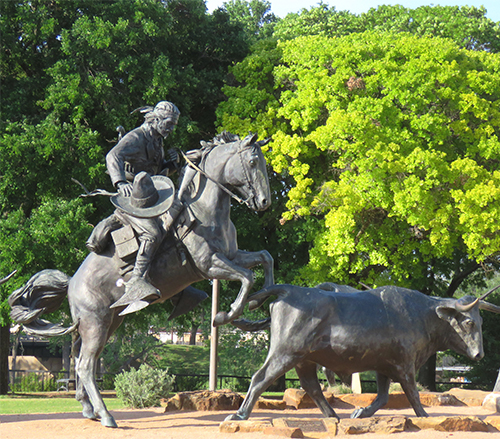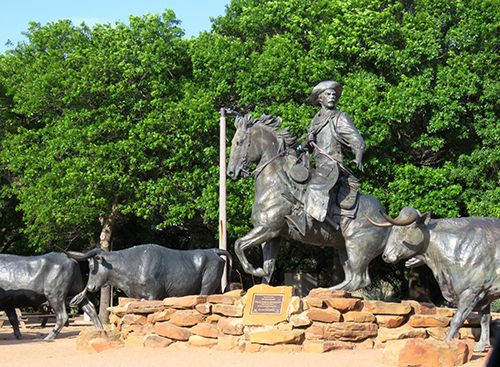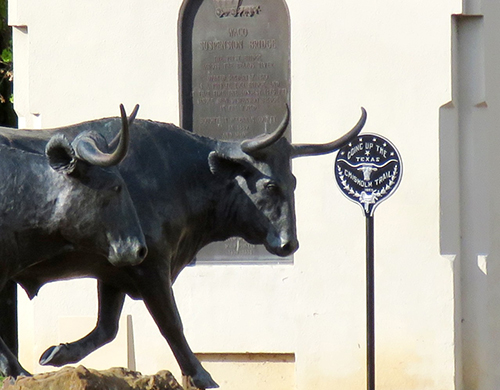The Chisolm Trail, which ran through the Waco District roughly following present day I-35, has an intriguing history. But the story behind dedicating and marking the famous trail by one very determined cattleman in the 1930s—and now with replacing those original markers after most of them mysteriously disappeared—is equally fascinating.
Much of that story will be told on April 21, when three Chisolm Trail markers will be dedicated in Waco, replacing those that went missing. TxDOT purchased the original markers and has been replacing the ones that disappeared to time, and rededicating them all along the Chisolm Trail in Texas.

"It really is a neat story," says Betsy Pittman, Waco District landscape architect. "I was able to learn a lot about these markers when I visited the foundry in San Antonio that not only created the replacement markers, but also handmade the original mold nearly 90 years ago. They somehow found the original mold and used it to make these new markers."
The Chisolm Trail markers story began in the 1920s when a Donna, Texas, cattleman in his seventies, Peter Preston Ackley, urged the state to commemorate the Texas Chisolm Trail with markers along the route. Ackley personally took part in longhorn cattle drives on the trail in the 1870s and 1880s. His efforts were successful, and 44 markers were placed in 22 Texas counties.

"Unfortunately, several years ago Pharr District Landscape Architect Steve Walker discovered that 37 of the original markers, including the ones in Waco, vanished," Pittman explains. "Like Ackley before him, Mr. Walker dedicated himself to getting Chisolm Trail markers placed, and now replaced, in Texas."
And that brings us to present day.
"For Waco, the markers' dedication helps commemorate the 150th anniversary of the Texas Chisolm Trail last year," says Kenneth Brittain, chairman of the McLennan County Historical Commission, who will emcee the ceremony. "Two of the markers are placed at both ends of the suspension bridge. It was at this same spot where cattle were ferried across the Brazos River headed north to Oklahoma and Kansas." Appropriately, a modern-day enhancement on the west end of the bridge is a permanent celebration of the Chisolm Trail story: a multipart sculpture installation depicting a herd of 25 longhorns with a trail boss, vaquero and cowboy, all mounted on their cowponies, driving the cattle toward the bridge. The third marker has been installed at the McLennan County courthouse in Waco.

Historians estimate 5 million longhorns were driven up the Chisolm Trail by Texas cowboys between 1867 and 1885, making it the largest migration of livestock in world history.
The Chisolm Trail Marker dedication will be held Saturday, April 21, at 11:00 a.m. on the west side of the historic Waco Suspension Bridge.
"The story of the Chisolm Trail markers has now come full circle," Pittman says. "Speaking for TxDOT, we're happy to provide these markers as a reminder of the dedication and hard work of the cattlemen, but also as a tribute to the people who took it upon themselves to make sure we've marked the route where so much Texas history took place."
Jake Smith
I-35 Public Information Officer
254-867-2705
Contact My35